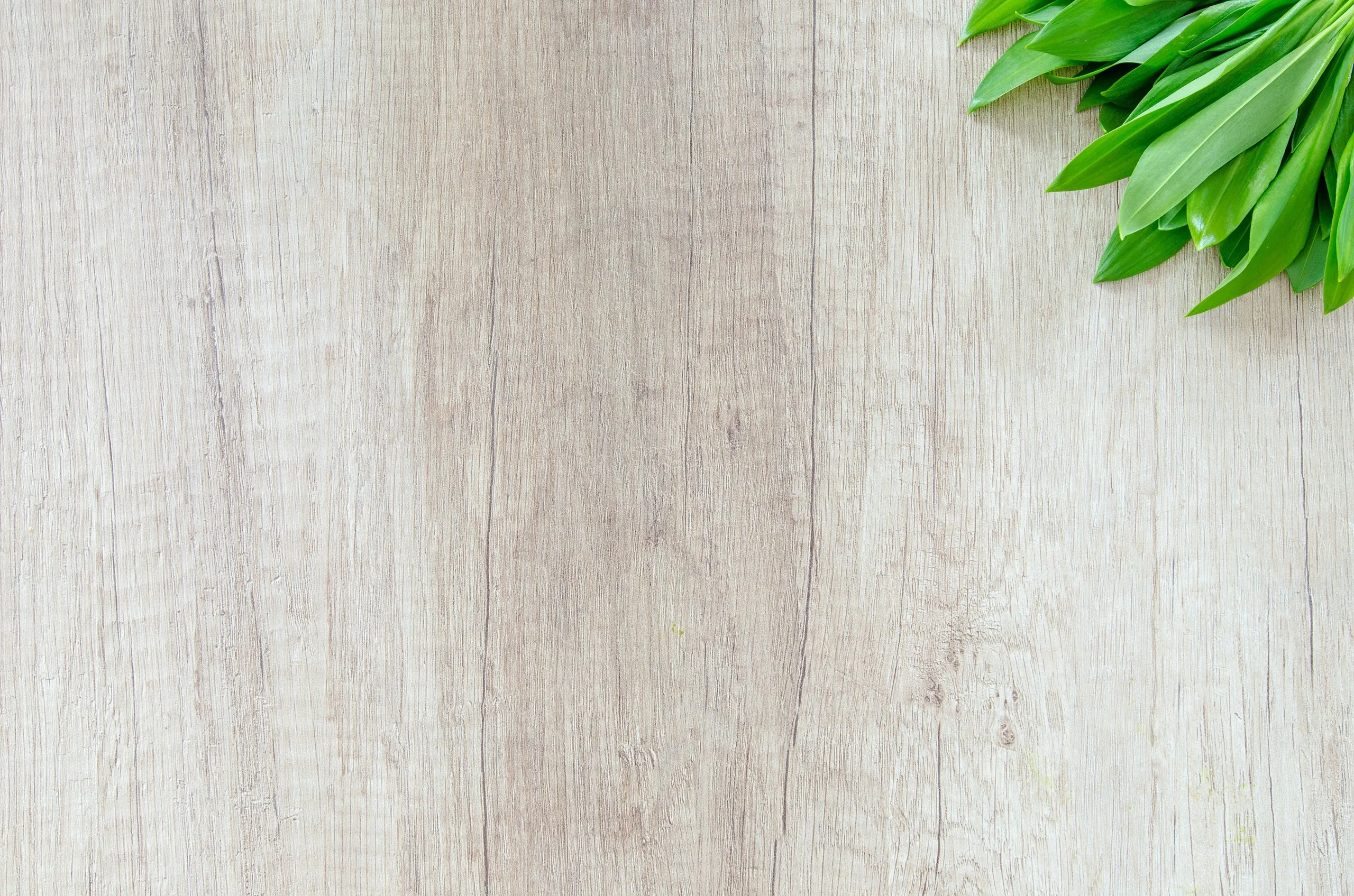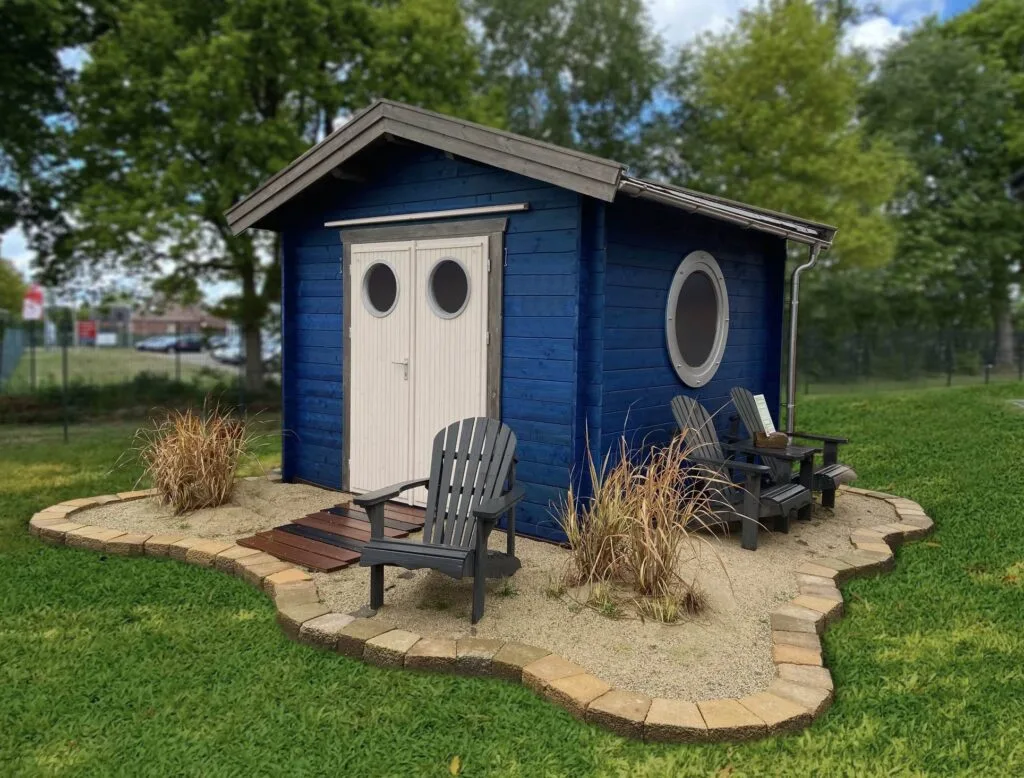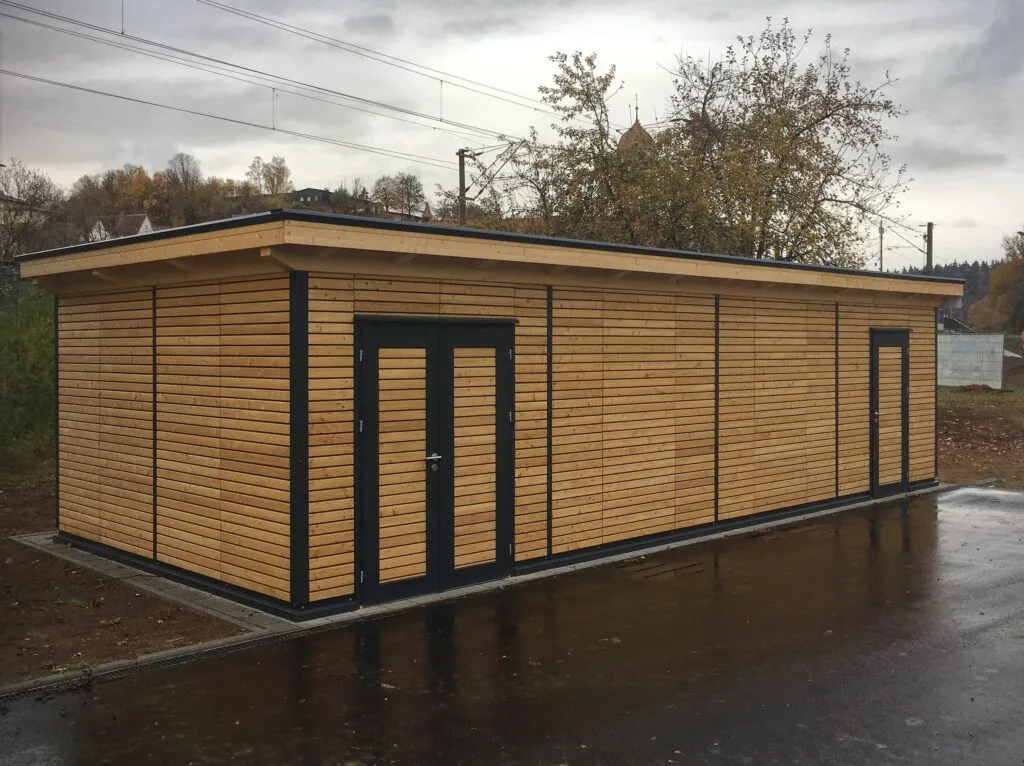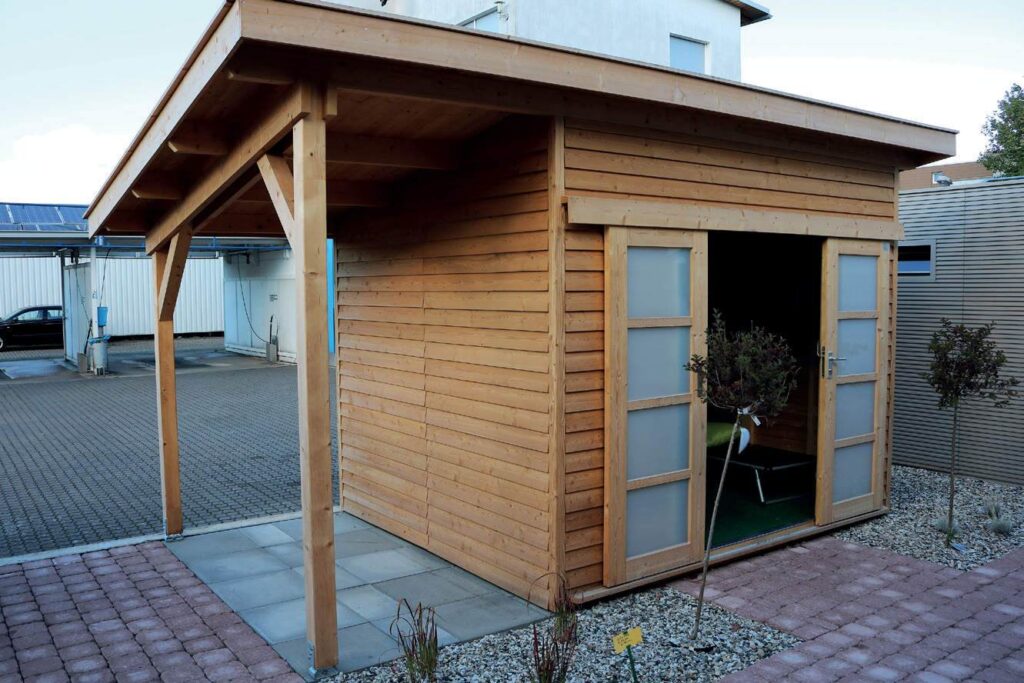

How to choose a shed
Size and space requirements
When selecting the ideal shed, it’s crucial to factor in the size and space available in your garden. Before settling on a specific model, take precise measurements of the space and envision your future storage requirements. The shed should not only house all your essential tools and equipment but also seamlessly blend into its surroundings, enhancing the overall garden layout. This thoughtful planning will leave you feeling prepared and confident in your choice.
Types of garden sheds
Garden sheds can be made from various materials, each with its advantages and disadvantages. The best garden sheds are durable, weatherproof, and well-designed. Choose one that meets your needs:
- Wood is natural in appearance and blends well with the garden. It requires regular maintenance but provides excellent insulation.
- Metal is very durable and pest-resistant. However, it can corrode in damp conditions and provide poor thermal insulation.
- Plastic: Has low maintenance, corrosion, and mildew resistance
Wooden garden sheds
Advantages of wooden sheds
Aesthetics: Wood is a material that blends naturally into the garden landscape, adding warmth and aesthetic charm. Wooden sheds can be easily personalized by painting or staining them in different colors.
Good insulation: Wood has natural insulating properties that keep the inside of the house cooler in the summer and warmer in the winter. This makes cabins ideal for storing temperature-sensitive items. At BHB Holzbau, we use durable Scandinavian wood that retains its natural properties.
Customization options: The wood is easy to work with, allowing for easy modifications such as adding windows, doors, or shelves, as well as other structural changes.
Eco-friendly choice: It is a renewable resource, and its use in construction has a lower environmental impact than that of plastic or metal production. The best sheds are made from responsibly sourced timber.

Disadvantages of timber buildings
Requires maintenance: Timber needs regular maintenance and protection from dampness, mold, pests, and weathering. It is essential to use waterproofing, paint, or varnish to ensure the structure’s longevity.
Susceptibility to pests: Wood can be attractive to insects, which can cause serious structural damage. Therefore, it requires appropriate prevention and maintenance.
Cost: Wooden tool sheds can be slightly more expensive to purchase and operate than metal or plastic counterparts due to the need for regular maintenance and potentially more costly materials.
Types and uses of sheds
Garden sheds differ not only in the materials they are made from but also in their purpose:
Storage sheds: Ideal for storing tools, garden equipment, and other items.
Workshops: Spaces for working on larger projects, often with extra windows for better lighting.
Gardening: Wooden sheds are ideal for storing plants in autumn and winter. They protect from the weather and low temperatures.
Designs and features
When choosing a shed model, it is essential to consider the type of roof, single or gabled, and the door options – single or double for easy access. Natural light and ventilation are also important, especially if you plan to spend a lot of time in the shed, such as when doing DIY.
Insulation and temperature control: Insulation is vital if the shed is used all year round, especially in climates with extreme temperatures. Good quality insulation will help maintain the correct temperature inside the shed and protect stored items.
Security features: Strong locks, durable hinges, and proper door design can deter potential thieves.
Legal considerations: In some cases, planning permission may be required depending on the size or purpose of the shed. It is always worth checking with your local authority to avoid legal issues.
Budget: The cost of buying a shed can vary considerably depending on size, materials, and additional features. When planning your budget, consider not only the cost of the shed itself but also the foundation, installation, and any adaptations.
Shed accessories: Shelving, lighting solutions, or even solar panels can significantly enhance the functionality of the shed. These accessories make it easier to organize the space and can contribute to the energy efficiency of the whole household.
Choosing the right tool house is a considered decision that takes many factors into account. The best tool houses are those that are tailored to your individual requirements. Look for the right size, materials, construction, safety and insulation features. A thoughtful decision will allow you to enjoy a functional and aesthetically pleasing addition to your garden for many years to come.



